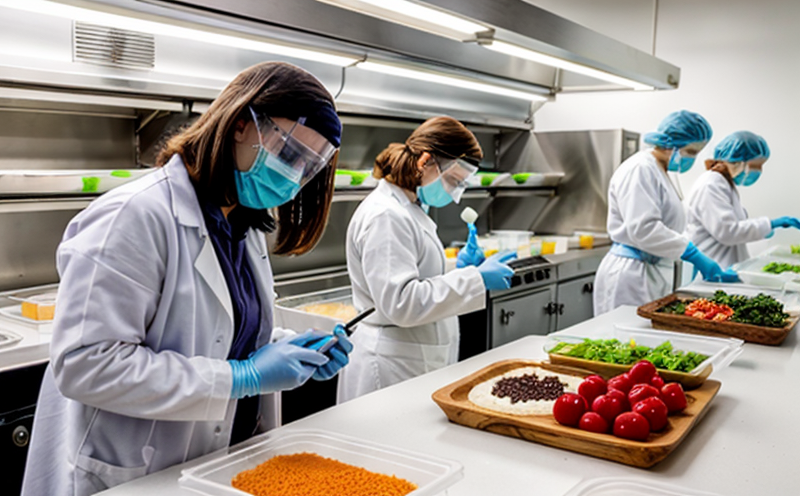FDA BAM Chapter 10 Listeria Detection in Food
The FDA Bacteriological Analytical Manual (BAM) Chapter 10 outlines methods for detecting and quantifying Listeria monocytogenes in food. This is crucial because Listeria can cause listeriosis, a severe infection particularly dangerous to pregnant women, newborns, the elderly, and individuals with weakened immune systems.
The FDA mandates that laboratories conducting this test adhere strictly to BAM Chapter 10 procedures for accurate results. The process includes careful sample collection, homogenization, plating, incubation, and confirmation steps. Proper adherence ensures reliable detection of Listeria monocytogenes in food products.
The testing procedure is designed to be comprehensive yet precise, requiring a combination of microbiological expertise and advanced laboratory equipment. The methodology includes several phases:
- Sampling: Proper collection and preservation of samples are critical steps that prevent contamination or loss of viable organisms.
- Homogenization: Samples must be adequately homogenized to ensure accurate representation.
- Enrichment: Enrichment broth is used to selectively enhance the growth of Listeria.
- Plating and Incubation: Plates are incubated under conditions that favor the growth of Listeria monocytogenes.
- Confirmation: Isolates are further identified through biochemical tests or DNA-based methods.
This chapter is widely recognized for its robustness and reliability, making it a standard in food safety laboratories worldwide. Adherence to these protocols ensures accurate detection of Listeria monocytogenes, which is vital for maintaining public health standards.
The methodology described by BAM Chapter 10 is not only used by regulatory bodies but also by food manufacturers and suppliers who aim to meet stringent quality control requirements. The process is designed to minimize false positives and negatives, ensuring that only true instances of Listeria contamination are reported.
In summary, the FDA BAM Chapter 10 method for detecting Listeria monocytogenes in food is essential for maintaining public health standards. By following this protocol, laboratories can ensure accurate and reliable results that contribute to safer food production practices.
Why It Matters
The detection of Listeria monocytogenes is paramount in ensuring the safety of food products. This pathogen poses a significant health risk, especially for vulnerable populations such as pregnant women and the elderly. The presence of this bacterium can lead to severe illness or even death if not detected early.
The FDA mandates that all commercial establishments producing potentially hazardous foods follow specific protocols outlined in BAM Chapter 10. Non-compliance with these guidelines can result in severe penalties, including product recalls and legal action. Therefore, ensuring proper adherence to the procedures is critical for maintaining compliance and protecting public health.
Implementing this testing method not only helps in preventing foodborne illnesses but also enhances consumer confidence in the safety of food products. By detecting Listeria, manufacturers can take corrective actions promptly, thereby reducing the risk of contamination spreading to larger populations.
The importance of this test cannot be overstated, as it plays a key role in safeguarding public health and ensuring that consumers are not exposed to potentially harmful pathogens.
Benefits
- Enhanced Public Health: Accurate detection helps prevent outbreaks of foodborne illnesses caused by Listeria monocytogenes.
- Regulatory Compliance: Adherence to FDA standards ensures compliance with legal requirements.
- Consumer Trust: Reliable testing methods instill confidence in consumers regarding the safety of food products.
- Risk Mitigation: Early detection allows for prompt corrective actions, minimizing the risk of widespread contamination.
- Data Integrity: Consistent and accurate results provide reliable data that can guide future product development and quality control measures.
- Operational Efficiency: Streamlined testing processes improve laboratory operations and resource allocation.
The benefits extend beyond health and safety; they also contribute to the overall reputation of food manufacturers and suppliers. By demonstrating a commitment to safety, companies can build strong relationships with consumers and regulatory bodies alike.
Environmental and Sustainability Contributions
The FDA BAM Chapter 10 method for Listeria monocytogenes detection plays an essential role in environmental sustainability. By ensuring that food products are free from contamination, the testing method helps prevent waste and resource inefficiencies associated with recalls or product failures due to microbial spoilage.
Incorporating this testing into production processes can lead to more efficient use of resources such as water, energy, and raw materials. Additionally, by reducing the occurrence of foodborne illnesses, the testing contributes to overall public health, which in turn reduces healthcare costs associated with treating these conditions.
The methodology also supports sustainable practices by encouraging continuous improvement in food safety protocols. This not only benefits the environment but also enhances long-term profitability for businesses through reduced waste and increased consumer trust.





